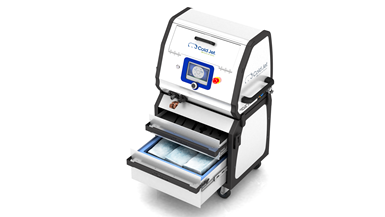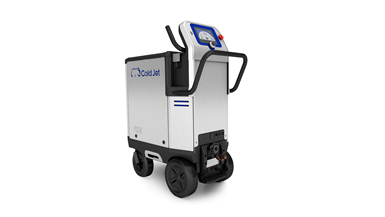Dry Ice Blasting for Faster, More Efficient Mold Cleaning
Like many of its dry ice blasting machines, the Cold Jet PCS60 and i3MC2 systems are able to tackle any type of mold — including those with A1 and textured surfaces — for quick, safe and efficient cleaning.
Cold Jet highlights its PCS60 and i3MC2 dry ice blasting machines as best suited for the quick, safe and efficient way to clean any type of molds and a variety of mold finishes up to and including A1 surfaces and textured surfaces, all while improving overall equipment effectiveness (OEE) operational efficiencies. This includes injection, blow, PET preform, LSR and LIM, thermoform, technical, HDPE, medical device, extrusion dies and metal injection molds, just to name a few.
Dry ice blasting is a non-abrasive process, does not produce secondary waste and enables users to clean their molds in the press at operating temperatures. Cold Jet says this leads to improved productivity, higher quality parts and reduced costs.
Designed to give the user complete control, the Aero2 PCS60 applies Cold Jet’s patented Particle Control System (PCS), which cuts the dry ice into diamond-shaped particles in the exact dimensions chosen by the operator (0.3-3 mm), enabling the user to fine-tune blasting parameters for each application. A 7" LCD screen and digital controls provide an intuitive display, and the machine features a programmable application recipes, so users can set and save blasting parameters, such as blast pressure, particle size and feed rate.
The i3 MicroClean 2 also features intuitive controls, and IoT capabilities. It utilizes dry ice block or pellets and can operate with as little as 12 cfm (0.3 m³/min) at variable air pressures from 20-145 psi (1.4-10 bar). It also is said to boost performance and reduces overall consumable usage by more than 25%.
According to a testimonial from Cold Jet customer TE Connectivity, “In addition to cleaning our molds faster and more frequently, we no longer need a team of people to help us disassemble, clean and reassemble molding equipment.”
RELATED CONTENT
-
A Look at Mold Texturing
Laser texturing, if understood and appreciated, can open up the door to endless possibilities in texturing, according to this texture house.
-
Teach Yourself Polishing
Schools for mold polishing do not exist and most veteran polishers don't want to teach the subject, so here are a few simple polishing guidelines.
-
Line Width vs. Depth Ratio in Laser Engraving
A laser does not produce 90-degree sidewalls. It requires a certain amount of draft in order to produce the required pattern.












